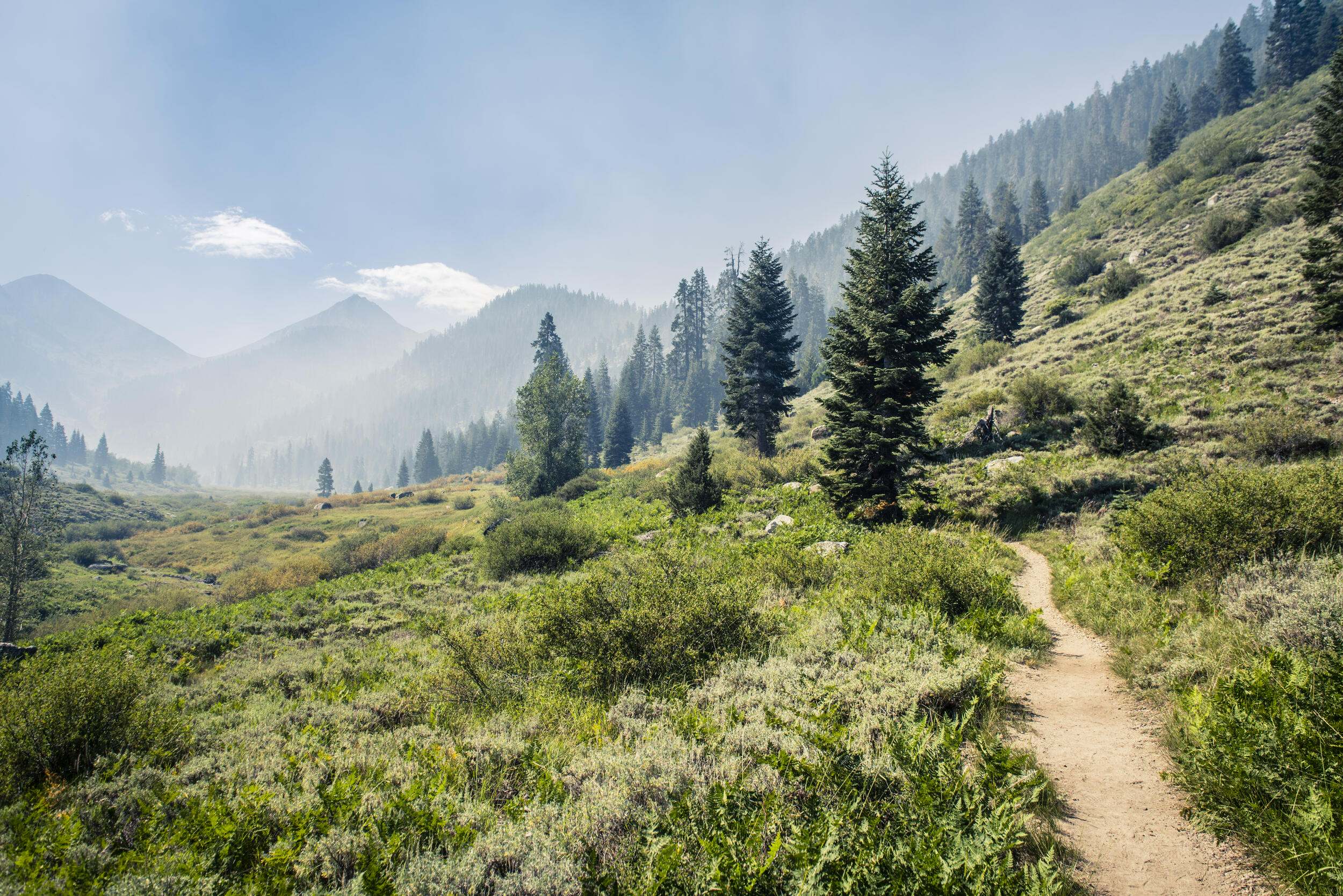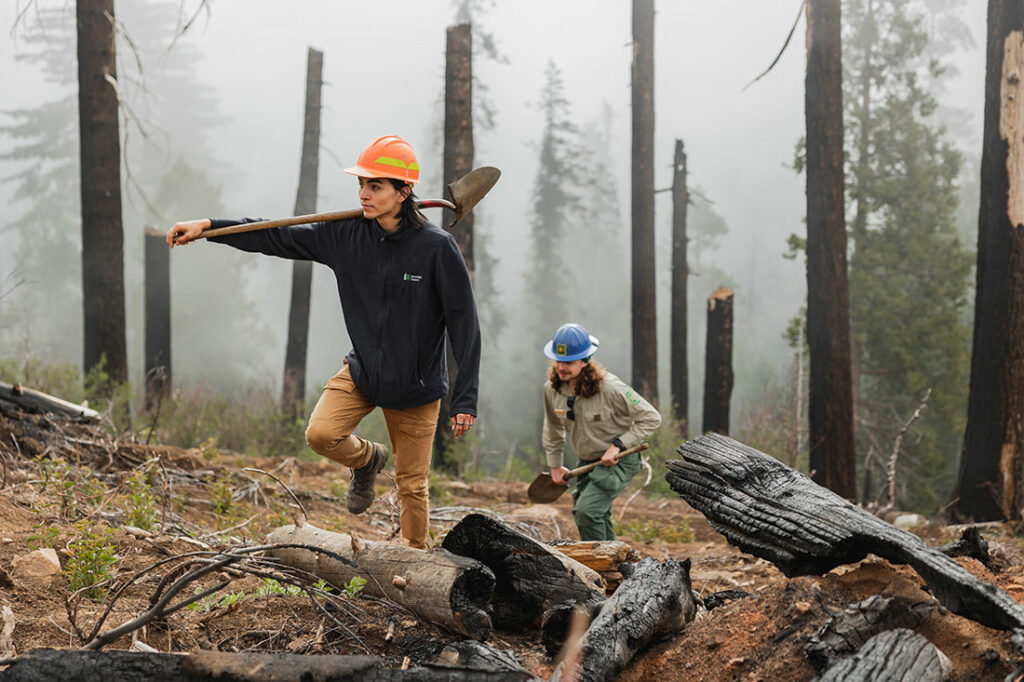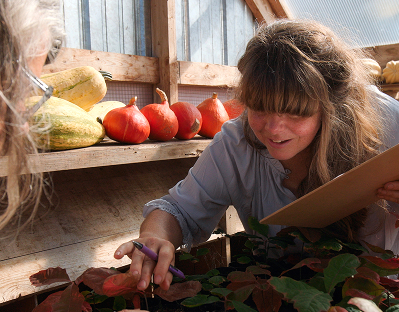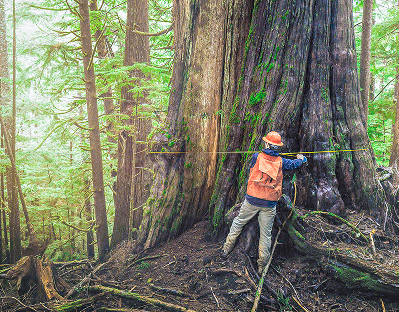
Post-fire reforestation in California
Post-fire reforestation in California is crucial for restoring the state’s forests and supporting local communities. These efforts not only rebuild ecosystems but also provide economic benefits, enhance recreational opportunities, and protect vital resources like clean water and wildlife habitats.

What difference does post-fire reforestation efforts make for communities in California?
Reforestation boosts local economies and creates jobs
Forested landscapes like Yosemite and Lake Tahoe drive California’s $6.2 billion outdoor recreation industry while providing vital habitat for elk, mountain lions, Pacific fishers, and other iconic wildlife.1
Healthy forests attract hikers, campers, and tourists, generating revenue for local businesses and communities. For instance, tourism to Redwood National Park contributed $37.9 million to the local economy in 2023, supporting numerous jobs.2
Reforestation projects can help address projected shortages of 6,000 fire managers, 4,000 conservation scientists and foresters, 7,000 loggers, and 1,500 utility line clearance technicians in California. These initiatives provide well-paying jobs with benefits, stimulating local economies.3
Strategic reforestation and forest management can reduce future fire risks
Strategically reforesting with fire-resistant species and appropriate forest management, including thinning and prescribed fires, can lower the intensity and spread of future fires. A recent study found that wildfire severity on sites that received prescribed fire or a combination of prescribed fire and mechanical thinning was 60% lower than nearby areas that were not treated.4
Healthy forests protect water quality and prevent erosion
Wildfires destroy vegetation, leading to soil erosion, water contamination, and increased risks of landslides and flash floods. The 2017 Thomas Fire, for example, triggered deadly mudslides in Montecito.5
Reforestation stabilizes soil and protects watersheds, which supply 60% of California’s developed water.1,6 Losing these forests would threaten clean drinking water for millions.
Restored forests support biodiversity and wildlife habitats
Restoring forests supports essential pollinators, which in turn help sustain California’s agricultural economy (valued at $50 billion+ annually).7
Approximately 33% of the value of California agriculture comes from pollinator-dependent crops, representing a net value of $11.7 billion.8
Restored forests serve as ecological corridors, facilitating movement and genetic exchange among many animals, including pollinator populations. This connectivity is crucial for maintaining resilient pollinator communities and ensuring effective pollination across landscapes.9
Forests help naturally remove and store carbon
California has 31.5 million acres of forest10 that can help the state address climate change.11
In 2021, California’s forest sector sequestered and stored the equivalent of 22 million metric tons of CO212, equivalent to 6% of the total greenhouse gas emissions reported in the state for that same year (CARB 2023).11
What can be done with more funding for post-fire reforestation?
Increase the pace and scale of reforestation and resilience treatments
If wildfires and natural disturbances intensify in California as projected, insect mortality will rise in the 2030s, followed by more extensive wildfires in the 2040s.11 To mitigate future impacts and enhance carbon stability, it’s essential to accelerate reforestation and resilience efforts now.
Increase the pace and scale of reforestation and resilience treatments
In 2023, 487,000 acres in California received resilience treatments, and 78,000 acres were reforested. While this represents an improvement, it falls short of the goal recommended by scientists, which is 818,000 acres of resilience treatments and up to 172,000 acres of reforestation per year.11
Expand seed collection efforts
Increase funding for tree climbers and specialized teams to gather seeds from fire-resilient trees for large-scale replanting. In 2024, American Forests, the U.S. Forest Service, the California Department of Forestry and Fire Protection (CAL FIRE), and other partners collected a record of 11,330 bushels of cones, a 275% increase from 2023. This is enough to replant up to a quarter of the more than 1.5 million acres of forests the state lost to high-severity wildfires between 2019 and 2021.15
Increase funding for wildfire monitoring and research
Evaluate forest health and fire prevention projects to assess effectiveness in fuels management, community protection, habitat improvement, water quality, native plant species protection, and forest complexity.6
Expand use of controlled burning
To reduce the impact and severity of future wildfires, resilience treatments at a landscape scale, including thinning, prescribed fire, and cultural burning, need to be scaled to reduce stand densities and reintroduce beneficial fire in fire-adapted ecosystems.11
Coordinate efforts across public and private lands
Work with various land managers, including the USFS, private landowners, and Native American lands, to implement coordinated resilience and restoration treatments.11
Focus on key landscapes
Prioritize actions in the Sierra/Cascades and Klamath/Interior Coast Ranges to minimize future forest carbon losses.11
Click for References
1. American Forests. (n.d.). California. Retrieved from https://www.americanforests.org/place/california/
2. National Park Service. (2024). Tourism to Redwood National Park contributes $37 million to local economy. Retrieved from https://www.nps.gov/redw/learn/news/tourism-to-redwood-national-park-contributes-%2437-million-to-local-economy.htm
3. U.S. Economic Development Administration. (2022). Foundation California Community Colleges project narrative. Retrieved from https://www.eda.gov/sites/default/files/2022-08/Foundation-California-Community-Colleges-Project-Narrative.pdf
4. Davis, K. T., Peeler, J., Fargione, J., Haugod, R. D., Metlen, K. L., Robles, M. D., & Woolley, T. (2024). A meta-analysis of thinning, prescribed fire, and wildfire effects on subsequent wildfire severity in conifer dominated forests of the Western US. Forest Ecology and Management, 561, 121885. Retrieved from https://www.sciencedirect.com/science/article/pii/S037811272400197X
5. Phys.org. (2019). New study examines 2017-2018 Thomas Fire debris flows. Retrieved from https://phys.org/news/2019-06-thomas-debris.html
6. The Nature Conservancy. (2022). Megafires: The growing risk to California’s forests and communities. Retrieved from https://www.nature.org/content/dam/tnc/nature/en/documents/FINAL-TNC_2Pager_Megafires.pdf
7. California Department of Food and Agriculture. (n.d.). Statistics. Retrieved from https://www.cdfa.ca.gov/Statistics
8. California Department of Food and Agriculture. (2023). Planting Seeds Blog. Retrieved from https://plantingseedsblog.cdfa.ca.gov/
9. Payne, H. E., Mazer, S. J., & Seltmann, K. C. (2024). Native bee habitat restoration: Key ecological considerations from recent North American literature. Frontiers in Ecology and Evolution, 12. Retrieved from https://www.frontiersin.org/journals/ecology-and-evolution/articles/10.3389/fevo.2024.1358621/full
10. USDA Forest Service. (2021). FIA DataMart 2.0: Home. Retrieved from https://apps.fs.usda.gov/fia/datamart/datamart.html
11. DeLyser, L., et al. (2025). Effects of Forest Management and Wood Utilization on Carbon Sequestration and Storage in California. Retrieved from https://d3f9k0n15ckvhe.cloudfront.net/wp-content/uploads/2025/02/CBM_CA_report_FINAL.pdf
12. USDA Forest Service. (2024). PNW-FIADB (Forest Inventory and Analysis Databases). Retrieved from https://research.fs.usda.gov/pnw/products/dataandtools/tools/pnw-fiadb-forest-inventory-and-analysis-databases
13. California Air Resources Board. (2022). 2022 Scoping Plan for Achieving Carbon Neutrality. Retrieved from https://ww2.arb.ca.gov/sites/default/files/2023-04/2022-sp.pdf
14. U.S. Nature4Climate. (2024). Support for implementing natural climate solutions in the United States is strong and growing. Retrieved from https://usnature4climate.org/2024/08/07/support-for-implementing-natural-climate-solutions-in-the-united-states-is-strong-and-growing/
15. American Forests. (2025). Seizing the seed supply moment. Retrieved from https://www.americanforests.org/article/seizing-the-seed-supply-moment/
16. American Forests. (2023). A giant task: Fixing California’s reforestation pipeline. Retrieved from https://www.americanforests.org/article/a-giant-task-fixing-californias-reforestation-pipeline/

Make the case for post-fire reforestation
Customize a PDF infographic to help you make the case for why post-fire reforestation is essential to empower and protect communities in California from the effects of the changing climate.


Learn More

Contact experts on reforestation:
Below is a list of organizations that specialize in reforestation within our coalition. Send us an email and we’ll direct you to the correct person to communicate with.

Explore our “Science for Decision-Makers” page
The “Science for Decision-Makers” section highlights key research on nature-based solutions in the U.S., including strategies like reforestation and improving forest management, complemented by blog articles, case studies, videos, and infographics that summarizes the research and explain the impact it can have on real-world situations.

What is the science?
See the climate mitigation potential of forest strategies in our Science page.
What else can be done?
- See how cropland nutrient management is benefitting farmers and communities in California
- Explore other states





